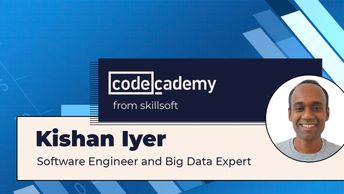IT Skills Data and Databases Math Math Behind Support Vector Machines
Simple to use yet efficient and reliable, support vector machines (SVMs) are supervised learning methods popularly used for classification tasks. This course uncovers the math behind SVMs, focusing on how an optimum SVM hyperplane for classification is computed.
Explore the representation of data in a feature space, finding a hyperplane to separate the data linearly. Then, learn how to separate non-linear data. Investigate the optimization problem for SVM classifiers, looking at how the weights of the model can be adjusted during training to get the best hyperplane separating the data points. Furthermore, apply gradient descent to solve the optimization problem for SVMs.
When you're done, you'll have the foundational knowledge you need to start building and applying SVMs for machine learning.
Explore the representation of data in a feature space, finding a hyperplane to separate the data linearly. Then, learn how to separate non-linear data. Investigate the optimization problem for SVM classifiers, looking at how the weights of the model can be adjusted during training to get the best hyperplane separating the data points. Furthermore, apply gradient descent to solve the optimization problem for SVMs.
When you're done, you'll have the foundational knowledge you need to start building and applying SVMs for machine learning.
| Objectives |
|---|
Support Vector Machine (SVM) Math: A Conceptual Look at Support Vector Machines
|


